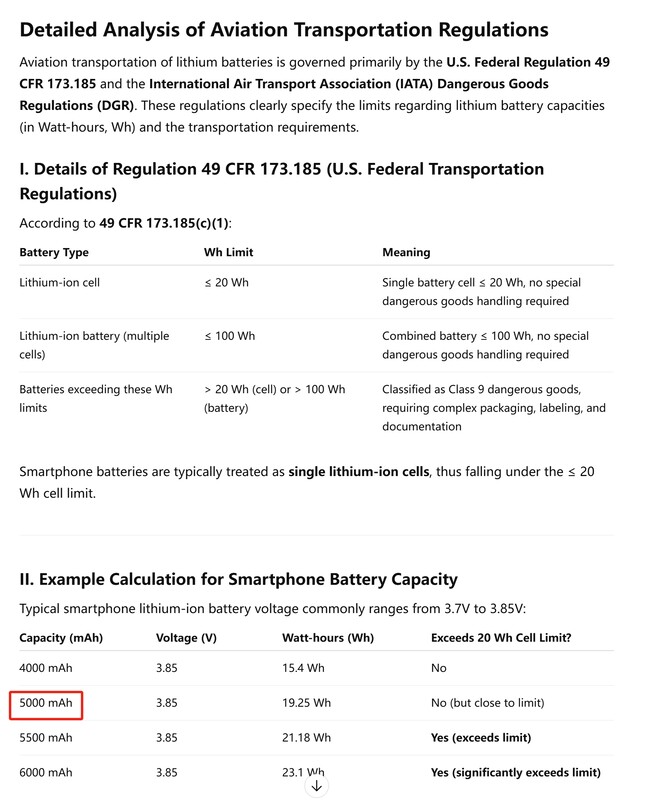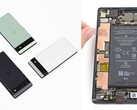In recent years, it was not uncommon to see Chinese smartphones with battery capacities of 6,000 mAh battery or higher end up in global retail with significantly reduced battery sizes. For example, the Xiaomi 15 Ultra has a 6,000 mAh battery in China, but has a 5,410 mAh battery in Germany and elsewhere. Another example is the Vivo X200 Pro. Non-Chinese smartphone brands also appear to be deaf to the wishes of bigger batteries in China. Samsung's Galaxy S26 Ultra, for example, is once again said to only have a 5,000 mAh battery on board, which is the same size as the Galaxy S20 Ultra from 2020.
Is this just laziness or the greed of large corporations, as some in the community have repeatedly suggested? At the very least, it is probably also due to regulations, as well-known Chinese leaker Ice Universe recently highlighted on X (formerly Twitter). In the US, for example, there is US Federal Transportation Regulation 49 CFR 173.185 (see screenshot below), which stipulates in detail the limit that lithium batteries in smartphones are subject to when shipped to the US before they are classified as Class 9 "Dangerous Goods" and become significantly more expensive to transport. The milliampere-hour (mAh) specification commonly used for smartphones must be converted to Wh.
Dual-cell batteries as a solution?
This regulation clearly shows that the 5,000 mAh limit, particularly popular with Samsung, could indeed have a legal basis since it falls just below the arbitrary limit set by US authorities. Neither Vivo nor Xiaomi currently sell their smartphones in the US, but similar regulations, perhaps with different limits, may also exist for the EU or parts of the EU where, for example, the Vivo X200 Pro is sold with a 5,200 mAh battery instead of a 6,000 mAh battery.
Dual-cell batteries, such as those in the OnePlus 13, could provide a potential way out of this outdated legal situation, which is unlikely to change any time soon. According to the regulation, each individual cell may offer more than 20 Wh of capacity as long as the total capacity remains below 100 Wh. Unfortunately, most manufacturers are not particularly transparent about the issue and do not give any specific reasons for the reduced battery capacities in some global markets, even when explicitly asked. In any case, the situation is likely to get much worse in 2026, when smartpones with 7,000 to 9,000 mAh batteries will be launched in China.
Source(s)
eCFR via Ice Universe und SamMobile
























